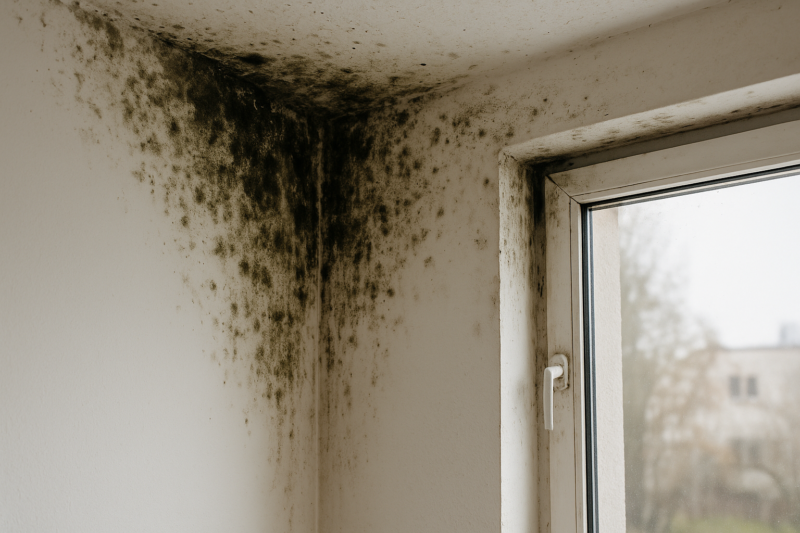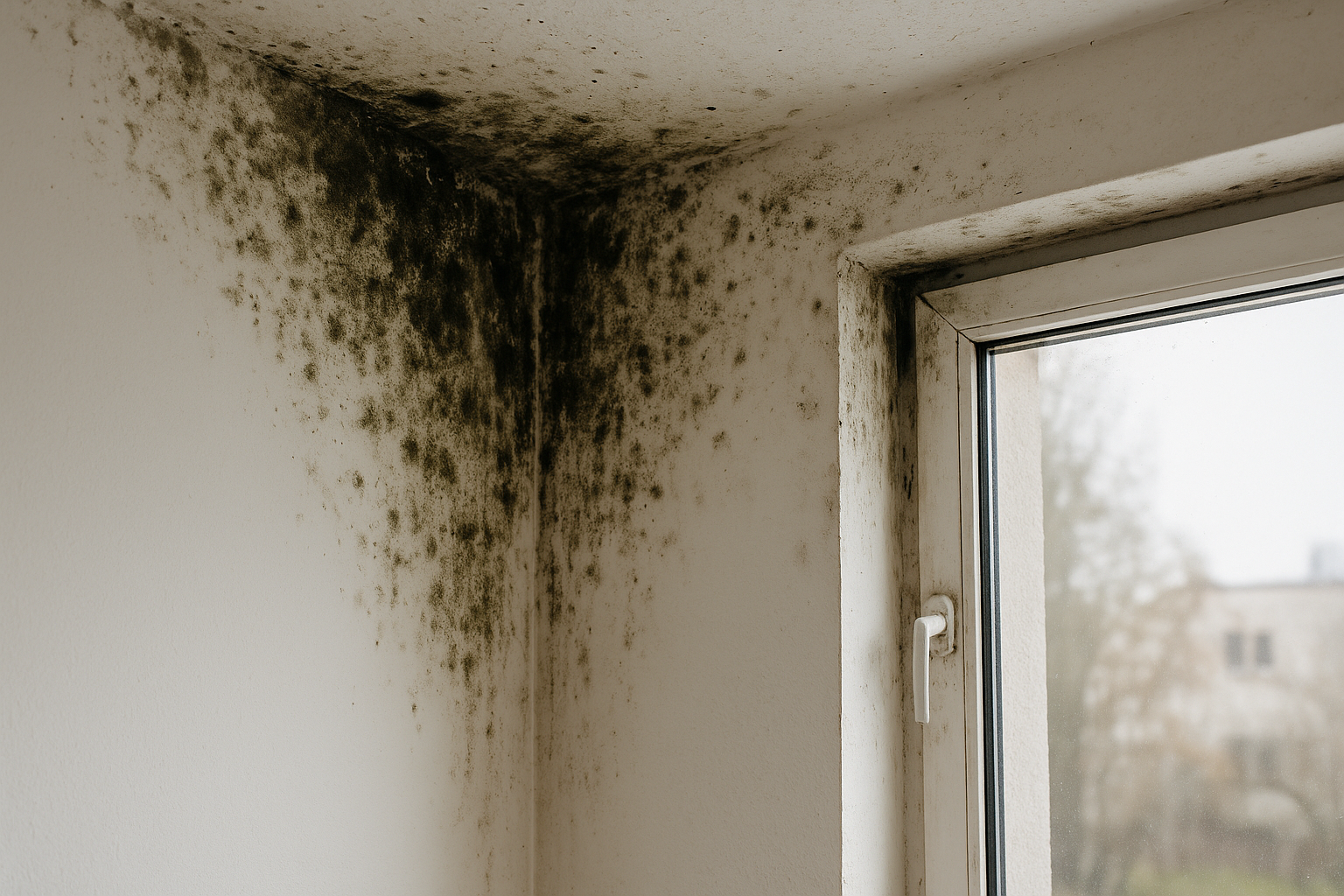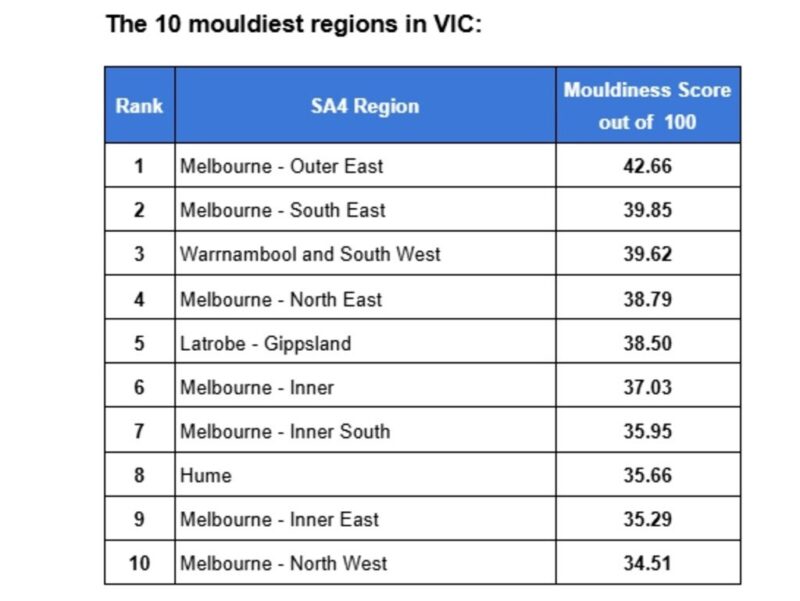
Key takeaways
Mould is quietly becoming one of the biggest hidden risks to property and health in Australia.
Sydney and Darwin topped the tally sheet of the nation’s mouldiest cities and Melbourne has just been ranked the fourth-mouldiest capital city in the country.
Weather makes it worse: Wet winters, frequent rainfall, and older housing with poor ventilation create ideal conditions for mould. A wetter-than-average spring with warmer nights will likely fuel further growth.
Mould is more than a maintenance issue. Tackling it early protects your tenants, your compliance, and the long-term value of your property portfolio.
If you’ve noticed that “musty” smell lingering in homes or apartments this winter, you’re not imagining it.
Mould is quietly becoming one of the biggest hidden risks to property and health in Australia,
Airtasker data reported on realestate.com showed that Sydney and Darwin topped the tally sheet of the nation’s mouldiest cities, with 92.48 out of 100 and 82.41 out of 100 “mould scores” respectively.
Melbourne has just been ranked the fourth-mouldiest capital city in the country, but it could soon be moving up the list thanks to our wet winter and the forecast for a damp, warmer-than-usual spring.
Of course, mould is more than an unsightly problem on walls and ceilings.
Left unchecked, it eats into the value of your property, impacts tenants’ health, and leaves landlords open to legal and financial headaches.

Why Melbourne is at risk
Airtasker’s national data shows mould removal jobs jumped 12% in recent weeks after one of the wettest winters on record.
While Sydney and Darwin top the mould league table, Melbourne isn’t far behind with a mould score of 73.83 out of 100.
AIRTASKER suggests that these are the mould hotspots for Melbourne...
Source: Airtasker
Why these areas? It comes down to a mix of cool, wet winters, frequent rainfall, older housing stock, and limited ventilation; conditions that are essentially a breeding ground for mould.
And with the Bureau of Meteorology forecasting wetter-than-average conditions and warmer nights this spring, the problem is only likely to get worse.
For renters, mould isn’t just a nuisance, it’s a serious health risk.
Research by the Australian Council of Social Service and UNSW found that 18% of Australian rentals have mouldy bathrooms, with many tenants too scared to request repairs in case their rents rise.
Tenants from Victoria hears frequent stories of families replacing ruined furniture and children missing school due to mould-related illnesses.
Respiratory issues, allergies, and even neurological symptoms like headaches and brain fog are being linked to untreated mould.
For landlords, this is a double whammy: not only are you responsible under Victorian law to disclose mould-related repairs made in the past three years, but ongoing mould issues can quickly damage your property’s reputation and rental appeal.
According to Airtasker, mould removal is different from your usual cleaning service. Depending on the size and type of mould present in the property, it can cost $50 to $6,000 to remove it.
On average, it costs $300 per room.mould removal costs in Australia range from $50 to $6,000 depending on the area size, with an average cost of $300 per room.
What property owners can do
The good news is mould can be prevented, or at least managed, with proactive steps.
Here’s what landlords, investors, and homeowners should be considering right now:
-
Improve ventilation: Ceiling vents in bathrooms, working exhaust fans, and ensuring airflow can make a big difference.
-
Reduce humidity: Use dehumidifiers, fix leaks quickly, and avoid drying clothes inside.
-
Stay on top of maintenance: Gutters, roofs, and plumbing should all be checked regularly to prevent water ingress.
-
Act early: Small patches on walls may be handled with supermarket sprays, but once mould spreads into porous materials like mattresses or couches, it’s time to call in professionals.
Think of mould management the same way you’d think about insurance: a relatively small cost now can prevent a much larger financial and health burden down the track.
The bottom line
For property investors and homeowners alike, mould is no longer a minor maintenance issue.
It’s a growing structural, financial, and legal challenge that can quietly undermine your wealth-building strategy.
As we head into what looks to be a wetter-than-normal spring, now is the time to get proactive.
Prevention is always cheaper than remediation, and in the case of mould, it’s also healthier, safer, and better for your property’s long-term value.















